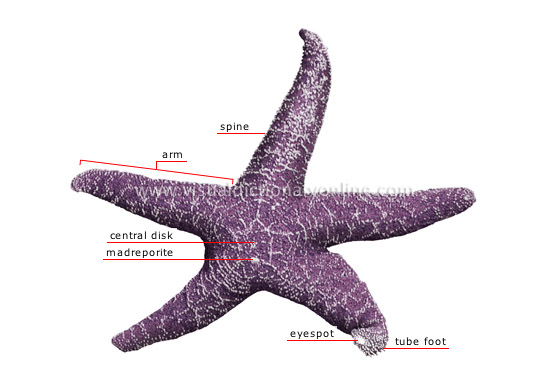morphology of a starfish
Starfish: carnivorous echinoderm found in the ocean depths; it generally has five arms, which allow it to crawl slowly along surfaces.
central disk 
Central region of the body; the starfish’s arms are attached to it.
spine 
More or less movable outgrowths of calcareous plates forming the skeleton and enabling the starfish to ward off its predators.
eyespot 
Small light-sensitive structure located at the terminal end of each arm, allowing it to locate surfaces and prey.
madreporite 
Porous dorsal plate that allows water to enter the body; it connects the ambulacral ossicle to the outside world, and thus ensures locomotion.
arm 
Movable appendage radiating around the central disk; it has a mainly tactile and olfactory function. The starfish can regenerate an amputated arm.







